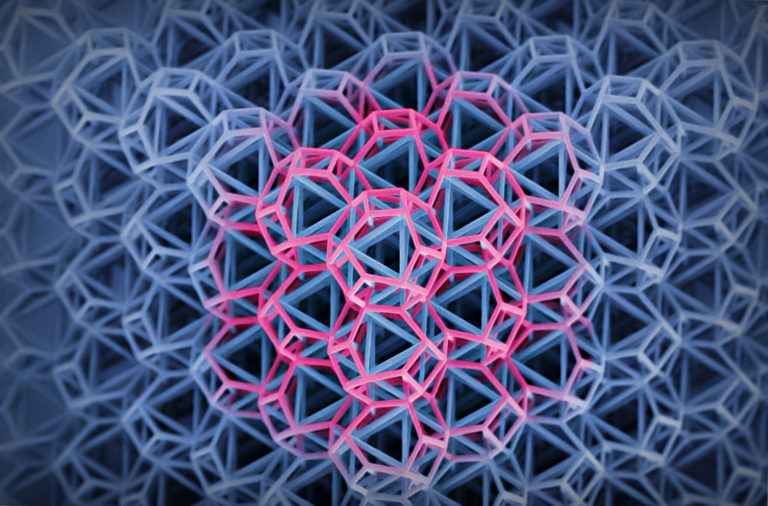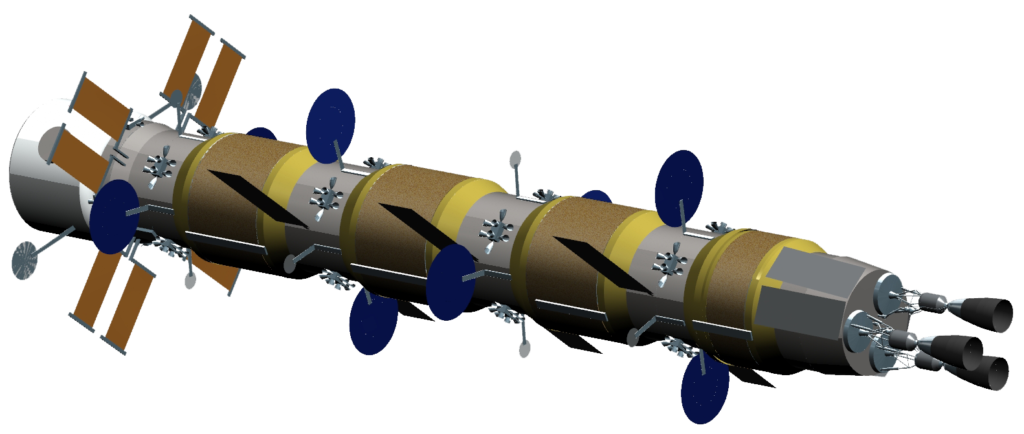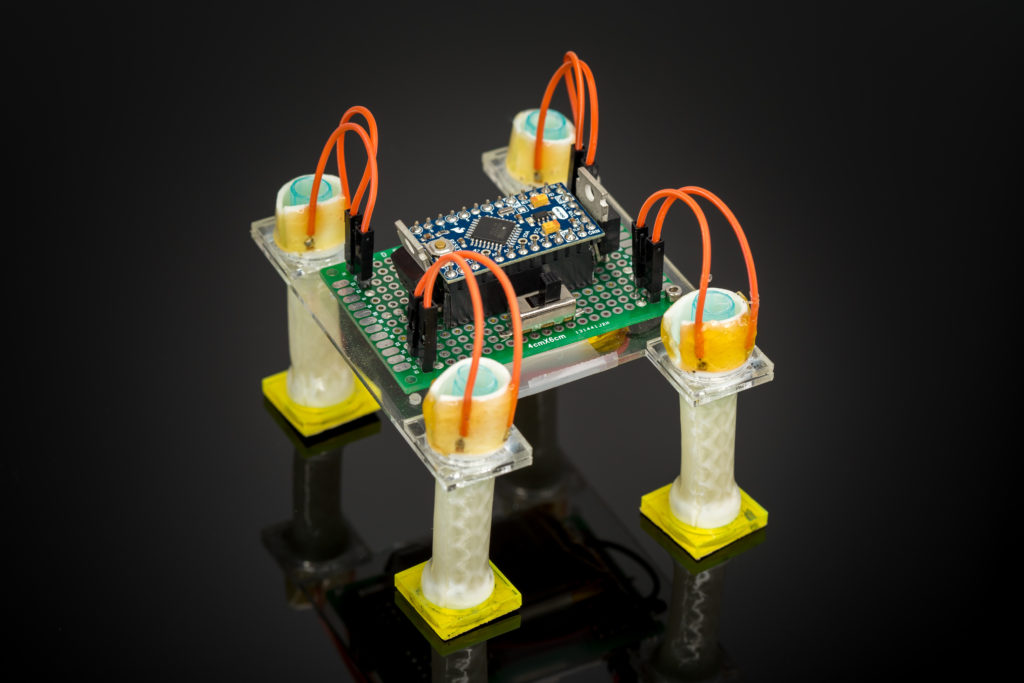Two researchers in the College of Engineering at The University of Alabama in Huntsville (UAH) have won a grant totaling $457,963 to study 3D magnetic reconnection.
Tag: mechanical and aerospace engineering
Soft, living materials made with algae glow under stress
Researchers have developed soft yet durable 3D-printed materials that glow in response to mechanical stress, such as compression, stretching or twisting. The materials derive their luminescence from single-celled algae known as dinoflagellates, which are embedded within the materials. The work was inspired by the bioluminescent waves caused by dinoflagellates during red tide events at San Diego’s beaches.
UAH researcher awarded $650K to develop propulsion system to boost surveillance of space between Earth and Moon
Dr. John Bennewitz, an assistant professor in the Department of Mechanical and Aerospace Engineering at The University of Alabama in Huntsville (UAH), has been awarded a $650,000, 45-month Air Force Office of Scientific Research (AFOSR) grant to develop an advanced propulsion system that will facilitate surveillance of space between the Earth and the Moon by the United States Space Force.
UAH doctoral candidate designs rotating detonation engine aimed to boost lunar and Mars missions
Michaela Hemming, a doctoral candidate in the Department of Mechanical and Aerospace Engineering at The University of Alabama in Huntsville (UAH), is using a NASA Space Technology Graduate Research Opportunities (NSTGRO) fellowship to make advances in propulsion under the guidance of NASA engineers.Hemming has designed a small-scale rotating detonation engine (RDE) manufactured by NASA as part of a joint research effort.
UAH team takes first in 2023 NASA Human Exploration Rover Challenge
A team from The University of Alabama in Huntsville (UAH) placed first in the 2023 NASA Human Exploration Rover Challenge (HERC) this year. The competition, held April 20-22 at the U.S. Space and Rocket Center (USSRC) Aviation Challenge area, tasks college and high school teams from around the nation and the world to design, develop, build and test human-powered rovers capable of negotiating difficult terrain, as well as a task tool for completion of various mission tasks.
In support of coming Artemis missions to the moon and beyond, HERC encourages research and development of new technology for future mission planning and crewed space missions to other worlds. The UAH rover is nicknamed ‘HERCules,’ and was guided by a two-person crew, competing with 49 teams from 20 states and eight countries.
UAH researchers win awards totaling $750K to advance steps toward “holy grail” fusion clean energy project
Mechanical and aerospace engineering faculty at The University of Alabama in Huntsville (UAH) have won a pair of research awards totaling $750,000 to collaborate with the Los Alamos National Laboratory (LANL) on research to advance knowledge toward one of the most sought-after goals of plasma physics, plasma fusion energy. This project marks the first experimental collaboration between the university and the LANL, helping to bring fusion and high energy density (HED) plasma research to UAH, a part of The University of Alabama System.
WVU space robotics research helps Mars rovers find their footing
West Virginia University scientists have developed a way for extraplanetary rovers to use nonvisual information to maneuver over treacherous terrain. This will help to prevent future losses of expensive equipment like that of the Martian exploration rover Spirit, which ceased communications after its wheels became trapped in invisibly shifting sands in 2010.
Two Henry Samueli School of Engineering scientists win DOE early career awards
Irvine, Calif., May 27, 2021 — The U.S. Department of Energy Office of Science has awarded funding to two University of California, Irvine scientists under its DOE Early Career Research Program. Mohammad Abdolhosseini Qomi, assistant professor of civil and environmental engineering, and Penghui Cao, assistant professor of mechanical and aerospace engineering, were among 83 researchers selected from university and national laboratory applicants to receive the research awards.

UCI-led team creates new ultralightweight, crush-resistant tensegrity metamaterials
Irvine, Calif., March 11, 2021 – Catastrophic collapse of materials and structures is the inevitable consequence of a chain reaction of locally confined damage – from solid ceramics that snap after the development of a small crack to metal space trusses that give way after the warping of a single strut. In a study published this week in Advanced Materials, engineers at the University of California, Irvine and the Georgia Institute of Technology describe the creation of a new class of mechanical metamaterials that delocalize deformations to prevent failure.
Undulating flight saves Monarchs energy, says UAH study with drone implications
In a finding that could benefit drone design, award-winning research by a doctoral student at The University of Alabama in Huntsville (UAH) shows that the undulating flight paths of Monarch butterflies are actually more energy efficient than a straight-line path.
UAH Space Hardware Club’s liquid fuel rocket readies for inaugural engine test
The new year brings new tests for an ambitious liquid propellant rocket being engineered by the Space Hardware Club (SHC) at The University of Alabama in Huntsville (UAH).

UAH modeling the spacecraft for NASA’s nuclear thermal propulsion idea
NASA has a research grant with The University of Alabama in Huntsville (UAH) to model how a spacecraft might be engineered to work with nuclear thermal propulsion (NTP), en route to an eventual test flight.

These new soft actuators could make soft robots less bulky
Engineers at the University of California San Diego have developed a way to build soft robots that are compact, portable and multifunctional. The advance was made possible by creating soft, tubular actuators whose movements are electrically controlled, which makes them easy to integrate with small electronic components. As a proof of concept, engineers used these new actuators to build a soft, untethered, battery-powered, walking robot and a soft gripper.